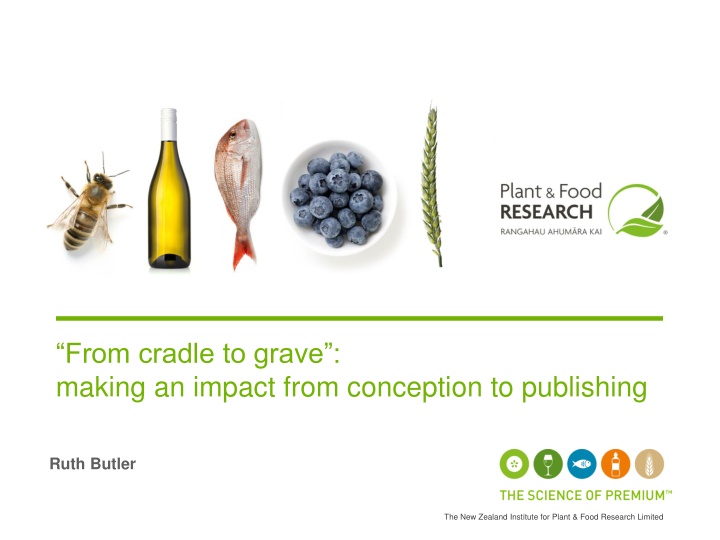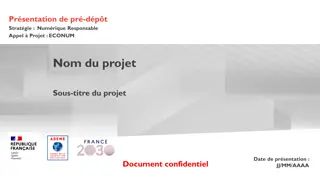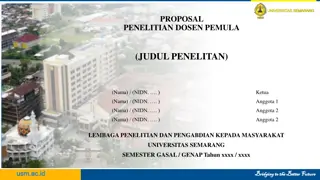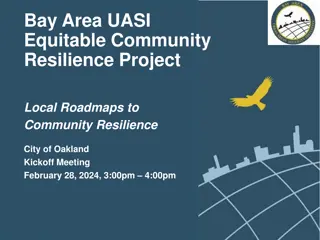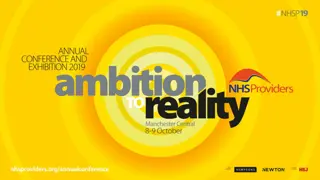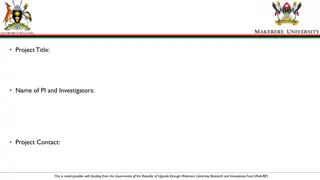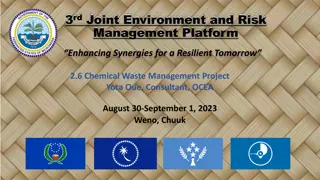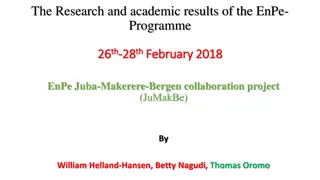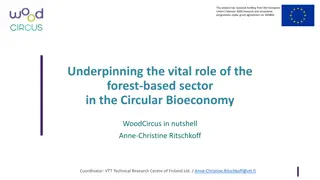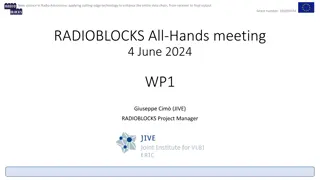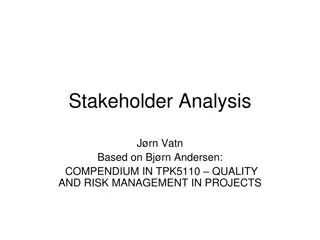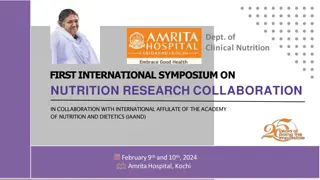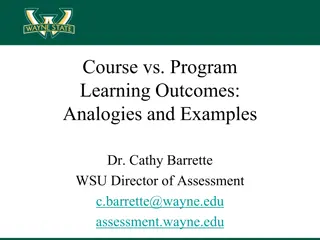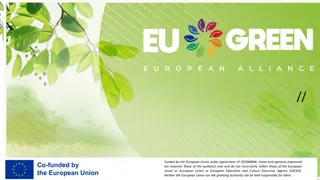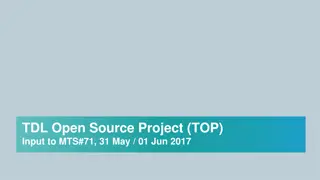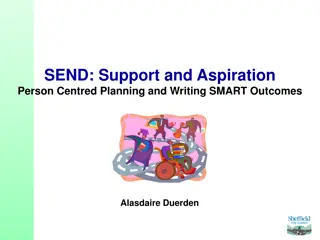Enhancing Research Collaboration for Better Project Outcomes
Dive into the essential aspects of collaborating in scientific research projects, from conception to publishing, focusing on statistical analysis, developing relationships with scientists, and effective ways of working. Learn how to become a key member of project teams and provide valuable support throughout all stages of the research process.
Download Presentation

Please find below an Image/Link to download the presentation.
The content on the website is provided AS IS for your information and personal use only. It may not be sold, licensed, or shared on other websites without obtaining consent from the author.If you encounter any issues during the download, it is possible that the publisher has removed the file from their server.
You are allowed to download the files provided on this website for personal or commercial use, subject to the condition that they are used lawfully. All files are the property of their respective owners.
The content on the website is provided AS IS for your information and personal use only. It may not be sold, licensed, or shared on other websites without obtaining consent from the author.
E N D
Presentation Transcript
From cradle to grave: making an impact from conception to publishing Ruth Butler The New Zealand Institute for Plant & Food Research Limited
Collaboration: the Core of Consulting My major annual objective: Collaborate in science projects at a high level throughout the duration of the project. Consulting: Collaboration Research, Development . Other .. Consulting Support Training The New Zealand Institute for Plant & Food Research Limited
Statistical aspects at all stages of a research project Study Aims Planning How/What to Measure Design Modelling Do the study Data manipulation What treatments Data collection/ storage Analysis How many replicates? Formal Analysis Reporting Testing How/what to Sample Archiving Data summary/ graphing Interpretation & presenting The New Zealand Institute for Plant & Food Research Limited
Developing a Collaborative Relationship Develop good relationships with scientists (lots of chatting!) Be their statistical go to person -> Work with the same people/ groups over the long term Become familiarwith the scientist s discipline, tools and methods Be flexible: adapt advice and practices to the project and project team s needs Be good at the basics -> Enhances acceptance of higher-level methods Provide easy to use/ accessible materials and outputs Aim: Become a full and default member of the project team The New Zealand Institute for Plant & Food Research Limited
Ways of working Planning/ Design: Discuss research projects at an early stage (not just trial design, treatments, but research aims) Provide easy-to-use trial plans and data sheets Discuss what data is going to be collected Input during a study: When things go wrong Advice on sampling Advise on Data entry and basic exploration Analysis Summarised in a report complete with suggested figures and tables AND interpretation The New Zealand Institute for Plant & Food Research Limited
PFR Excel Templates Template sheets: Project Description: Overall summary VariableNames: Describes RawData Columns RawData TrialPlan DesignGenerationDetails Diary CalculatedData: Separated from RawData DataExploration: PivotTables, Figures Metadata Calculations & Explorations Data Sheet The New Zealand Institute for Plant & Food Research Limited
Templates: Trial Design Visual layout facilities laying out trial Includes plot numbers Brief treatment description Brief description of design The New Zealand Institute for Plant & Food Research Limited
Templates: Design generation info -integral part of experimental process -useful for analysis stage The New Zealand Institute for Plant & Food Research Limited
Templates: Skeleton DataSheet Gives strong guidance on best practice The New Zealand Institute for Plant & Food Research Limited
Writing a report: Not just annotating output! >20 years ago: Print output on line-printer paper Annotate, hand draw figures, Maybe print graphs, cut out & paste onto output (real glue!) The New Zealand Institute for Plant & Food Research Limited
Writing a report: Not just annotating output! Code not linearly related to report! It includes stuff : oFor data manipulation, checks oTo help make good tables, graphs Complex methods poorly understood -> possible confusion from output Now: Rarely give people output Write full reports Reports: Initial sections: Describe what (I think!) was done, what I did Good aide-memoir when looking back Focus: interpretation of analysis results Especially useful: when more than basic analyses done Enhances chances of getting an authorship! Parts of report Cut & Paste into Science Report/ Paper The New Zealand Institute for Plant & Food Research Limited
Sections in my reports 1. Experiment and Data Description of what I think was done, and description of trial design 2. Methods of Analysis Description of statistical analysis methods. Includes references for methods & software 3. Results Summary of analysis results- interpretation in words, plus tables and figures 4. References 5. Appendices Might contain output or code. Or else further figures and tables The New Zealand Institute for Plant & Food Research Limited
Trial/ Study Description Useful for looking back Check: my understanding = what was done The New Zealand Institute for Plant & Food Research Limited
Analysis Methods A useful record Easily adapted for a publication The New Zealand Institute for Plant & Food Research Limited
Results part 1 Stuff to do with data problems Exploratory summaries The New Zealand Institute for Plant & Food Research Limited
Results For the first five assessments (Table 4, Figure 5), when all treatments were being assessed, there were significant differences between the treatments at the 1st, 2nd and 4th assessments (p<0.001, p=0.007, 0.211, 0.048, 0.075 for the five assessments respectively). Summary of test results/ formal analysis At each of these dates, the %Alive for the Water control was highest or second-highest (but similar to the highest). Conversely, the %Alive was zero or close to zero for the Seed treatment at each of these assessments. The %Alive for treatment Tf was also low at each of these assessments Interpretation The New Zealand Institute for Plant & Food Research Limited
Results Tabular AND graphical version of same results Figures made in SigmaPlot Scientist: - Can edit easily - Has ownership (Genstat used for complex figures) The New Zealand Institute for Plant & Food Research Limited
Conclusion A bit of extra effort early on and to develop tools/ methods saves time and pays dividends Acknowledgements for templates: Linley Jesson, Duncan Hedderley, Andrew McLachlan, Peter Alspach The New Zealand Institute for Plant & Food Research Limited
Thank you www.plantandfood.co.nz plantandfood.co.nz Ruth.Butler@plantandfood.co.nz The New Zealand Institute for Plant & Food Research Limited
